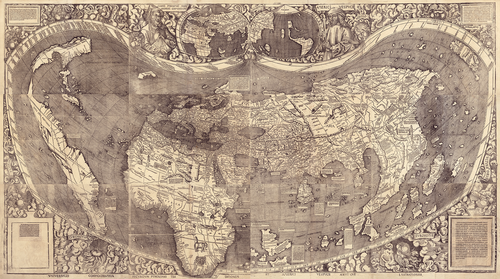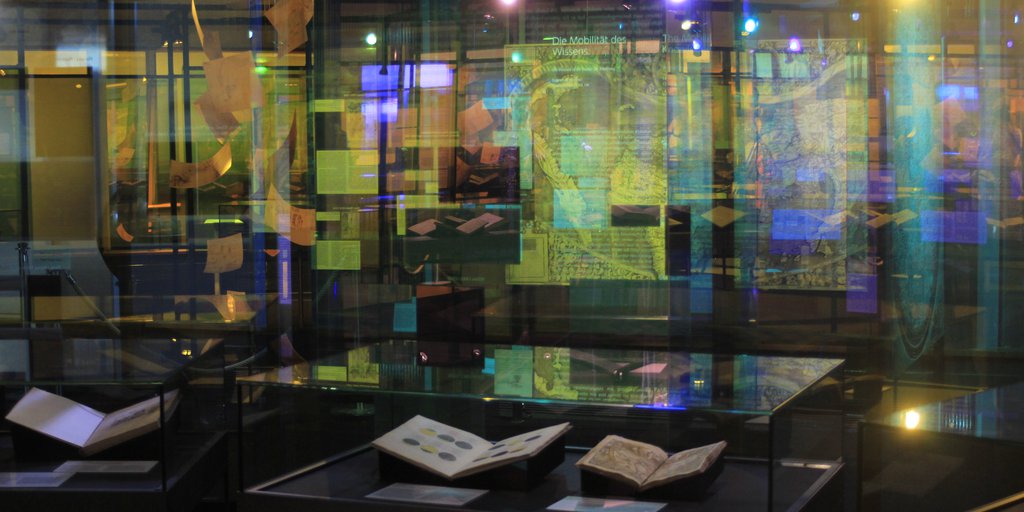
The Mobility of Knowledge <
Wisdom is the daughter of experience
Leonardo da Vinci
Codex Forster III, fol. 14r
The knowledge gathered by Leonardo in his personal library is collective knowledge. It is based, first, on a long tradition dating back to antiquity, and second, on increasing human mobility since the late Middle Ages. Oceanic navigation and the growth of printing created another major push. Merchants traveled along the major trade routes and maintained branches in important urban centers; participants in the Crusades brought knowledge to Europe, especially from the Arab world; international scholars and students exchanged ideas at the universities thanks to the universal language of Latin; artists and master builders traveled across Europe and beyond in search of lucrative commissions and the latest artistic developments. Explorers on voyages of discovery undertook daring expeditions to hitherto unknown continents and brought back new knowledge, while the colonizers who followed them seized the newly discovered territories—with terrible consequences for their inhabitants. This new knowledge was recorded and published in the form of reports, stories, in increasingly precise geographical maps, and in new scientific treatises. The result was a constant expansion and transformation of the worldview. In Leonardo’s library, too, the share of this new knowledge continued to grow over the years.
World in Motion <
- 101.
Mappa Mundi
ca. 1450
- 102.
Universalis cosmographia secundum Ptholemaei traditionem
et Americi Vespucii alioru[m]que lustrationes1507
- 103.
Das vierdte Buch von der Neuwen Welt. Oder neuwe und gründtliche Historien,
von dem Nidergängischen Indien, so von Christophoro Columbo im Jar 1492. erstlich erfunden1613
- 104.
Astrolabium (Amerigo Vespucci discovers the Southern Cross)
ca. 1590
- 105.
ca. 1491–1494
- 106.
ca. 1600
 | 102.
Universalis cosmographia secundum Ptholemaei traditionem 1507 |

The Waldseemüller Map is named after its maker, the cartographer Martin Waldseemüller (ca. 1472/75–1520), who came from Freiburg and worked in Saint-Dié in Lorraine. It is often described as “America’s birth certificate.” This is the first world map to represent the newly discovered landmass in the West as an independent continent and to give it the name “America.” It was named after the Florentine navigator Amerigo Vespucci (1454–1512) (104 ●), whose travelogue Mundus Novus (1502) deeply impressed Waldseemüller. At the top of the map, a portrait of Vespucci is shown beside a miniature depiction of the New World, while the ancient Greek cosmographer Ptolemy figures as a kind of patron of the Old World. The map, which comprises 12 individual sheets, is the only surviving specimen from around 1,000 original copies. There is also an accompanying text on the world map and a segmental map of the globe, one of only a handful of copies still in existence today.
References
Lehmann, Martin. 2010. Die “Cosmographiae Introductio.” Matthias Ringmanns und die Weltkarte Martin Waldseemüllers aus dem Jahre 1507. Ein Meilenstein frühneuzeitlicher Kartographie. Munich: Meidenbauer.
Lester, Toby. 2010. Der vierte Kontinent. Wie eine Karte die Welt veränderte. Berlin: Berlin-Verlag.








